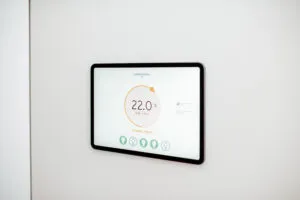Dive Brief:
- The U.S. Environmental Protection Agency has created a new certification program — the Energy Star NextGen Certification for New Homes and Apartments — for homes that meet specific requirements for increased energy efficiency and reduced emissions.
- The voluntary program, developed with funding from the Inflation Reduction Act, builds on the foundation set by the existing Energy Star program with stronger efficiency requirements, according to the EPA. Requirements for NextGen certification include heat pumps, resident electric vehicle charging stations, electric cooking appliances and highly energy-efficient construction.
- Compared to a code-built home, Energy Star NextGen homes are 20% more efficient and help reduce greenhouse gas emissions by 40% to 80%.
 Energy used to operate commercial and residential buildings accounts for one-third of greenhouse gas emissions in the U.S. These buildings have the potential to cut their energy use by 63% by 2030, according to a recent EPA study.
Energy used to operate commercial and residential buildings accounts for one-third of greenhouse gas emissions in the U.S. These buildings have the potential to cut their energy use by 63% by 2030, according to a recent EPA study.
While meeting Energy Star requirements is a prerequisite for NextGen certification, the program is not intended to replace Energy Star, according to a NextGen policymakers’ guide provided to Multifamily Dive by the EPA. In addition, while the standard requires the use of certain electric technologies, some limited gas use, such as in a backup heat source or fireplace, is acceptable.
A number of utility companies are offering early incentives for builders that adopt the Energy Star NextGen standard, according to the EPA.
Leave a Reply